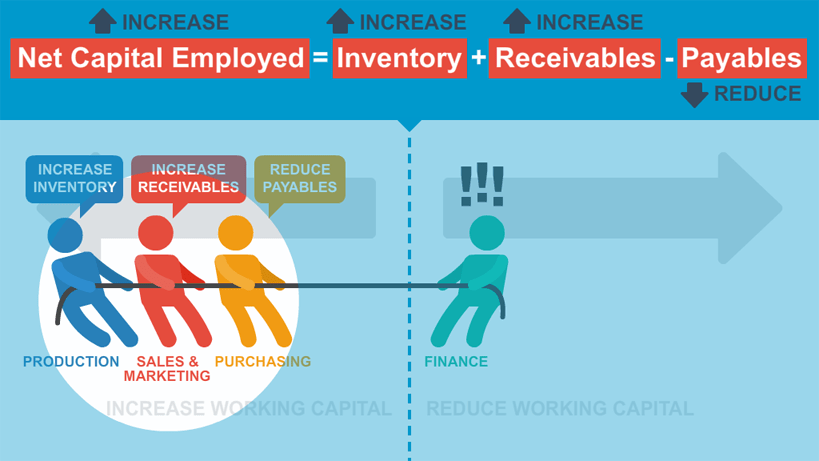Financial Statement Preparation Example Explanation of Steps

Read on to learn the order of financial statements and which financial statement is prepared first. While there is a difference in the accounting standards between GAAP and IFRS, the purpose of each financial statement free expense report templates remains the same. After a stint in equity research, he switched to writing for B2B brands full-time. Arjun has since written for investment firms, consultants, and SaaS brands in the Accounting and Finance space.
If you use accounting software, this usually means you’ve made a mistake inputting information into the system. The general ledger is like the master key of your bookkeeping setup. If fdic law regulations related acts you’re looking for any financial record for your business, the fastest way is to check the ledger. Next, you’ll use the general ledger to record all of the financial information gathered in step one.
- The bottom of your income statement will tell you whether you have a net income or loss for the period.
- Tax adjustments help you account for things like depreciation and other tax deductions.
- It’s probably the biggest reason we go through all the trouble of the first five accounting cycle steps.
- Missing transaction adjustments help you account for the financial transactions you forgot about while bookkeeping—things like business purchases on your personal credit.
- The accounting cycle is a multi-step process designed to convert all of your company’s raw financial information into financial statements.
What is your current financial priority?
External audits are performed by independent accounting firms to provide assurance on the accuracy and reliability of a company’s financial statements. Regulatory audits are conducted by government agencies to ensure compliance with laws and regulations. This method ensures that financial statements provide a more accurate representation of a company’s financial performance and position. Proper financial statement preparation requires a thorough understanding of accounting principles, standards, and regulations, as well as attention to detail and accuracy in recording and reporting financial data. Financial statements provide a comprehensive overview of a company’s financial performance, position, and cash flows, aiding in decision-making and financial analysis.

You offset the balances using something called “retained earnings.” Essentially, this is the profit or loss for the year that is “retained” in your business. In the first step of the accounting cycle, you’ll gather records of your business transactions—receipts, invoices, bank statements, things like that—for the current accounting period. These records are raw financial information that needs to be entered into your accounting system to be translated into something useful. The proper order of the accounting cycle ensures that the financial statements your company produces are consistent, accurate, and conform to official financial accounting standards (such as FASB and GAAP)). In other words, the concept financial reporting and the process of the accounting cycle are focused on providing external users with useful information in the form of financial statements. These statements are the end product of the accounting system in any company.
Financial statements are summary-level documents that provide details about a company’s financial position at a given point in time. Typically a balance sheet, cash-flow statement, and income or profit and loss statement are included. GAAP is a set of accounting standards and guidelines used in the United States.
Financial Accounting
There are several types of audits, including internal audits, external audits, and regulatory audits. Internal audits are conducted by a company’s internal audit team to assess the effectiveness of internal controls and risk management practices. This statement is essential for understanding a company’s liquidity and solvency, as well as its ability to generate and use cash effectively. The net income from the income statement will be used in the Statement of Equity. Learn about the Waste Book, why it’s the oldest book in accounting and how it’s still relevant today. The equity figure calculated when preparing the statement of changes in equity goes in this section.
General Principles and Concepts in Financial Statement Preparation
It records transactions when they are incurred, regardless of when the cash is exchanged. The income statement, or the statement of comprehensive income, summarizes a company’s revenues what is the reason for pooling costs a to shift costs from low and expenses over a specified period. It shows the company’s ability to generate profits by measuring the difference between revenues and expenses. Conduct a bank reconciliation, and create journal entries to record all adjustments required to match the accounting records to the bank statement. This is an essential activity, since there are always reconciling items on the bank statement. Then, list out any expenses your company had during the period and subtract the expenses from your revenue.
The key components of financial statement preparation include the balance sheet, income statement, statement of cash flows, and statement of stockholders‘ equity. These components provide a comprehensive view of a company’s financial position, performance, cash flows, and changes in equity. They are interrelated, as the performance and financial activities captured in the income statement and statement of cash flows affect the balance sheet and statement of stockholders‘ equity. Information from your accounting journal and your general ledger is used in the preparation of your business’s financial statement.
Tax adjustments help you account for things like depreciation and other tax deductions. For example, you may have paid big money for a new piece of equipment, but you’d be able to write off part of the cost this year. Tax adjustments happen once a year, and your CPA will likely lead you through it. Accruals have to do with revenues you weren’t immediately paid for and expenses you didn’t immediately pay. Think of the unpaid bill that you sent to the customer two weeks ago, or the invoice from your supplier you haven’t sent money for. If you use accounting software, posting to the ledger is usually done automatically in the background.
